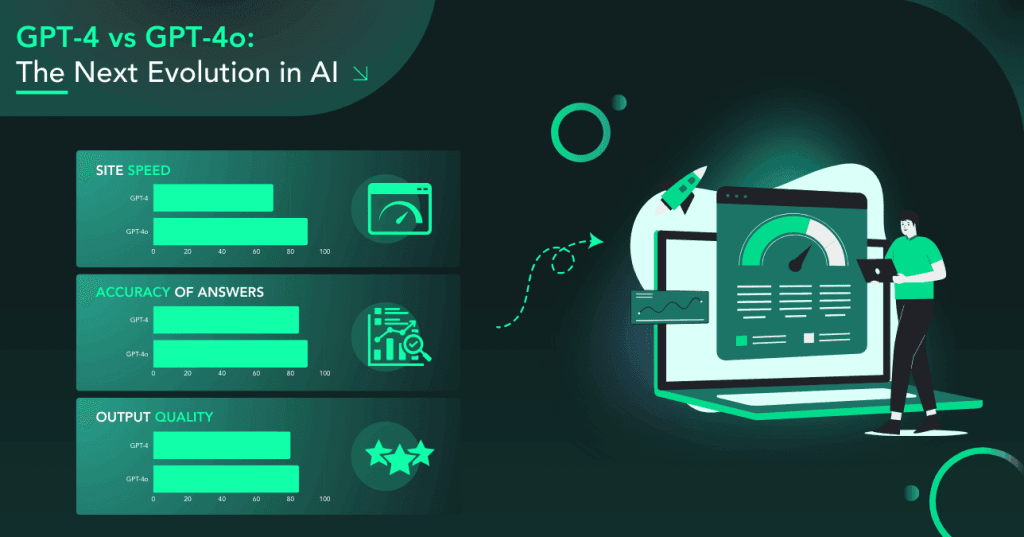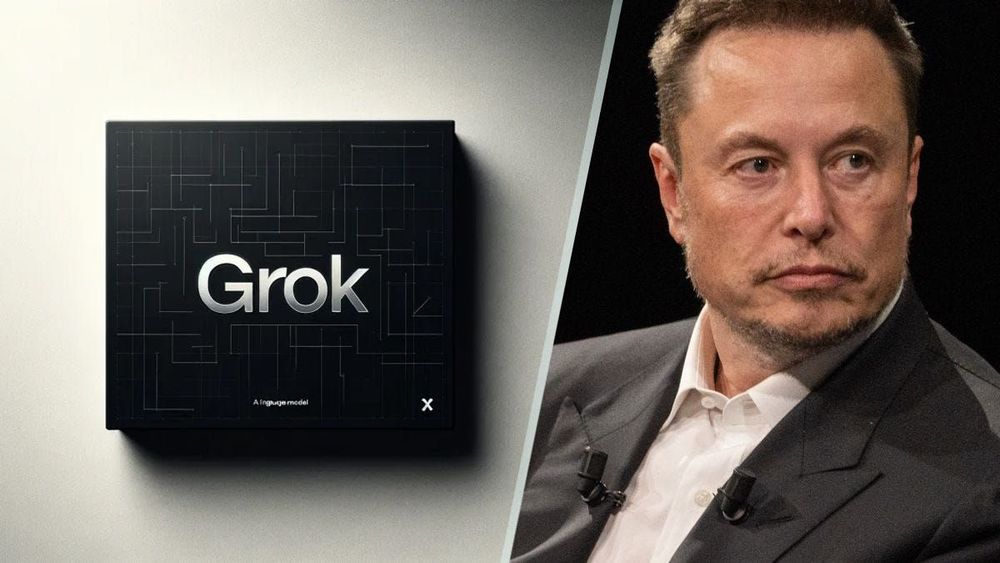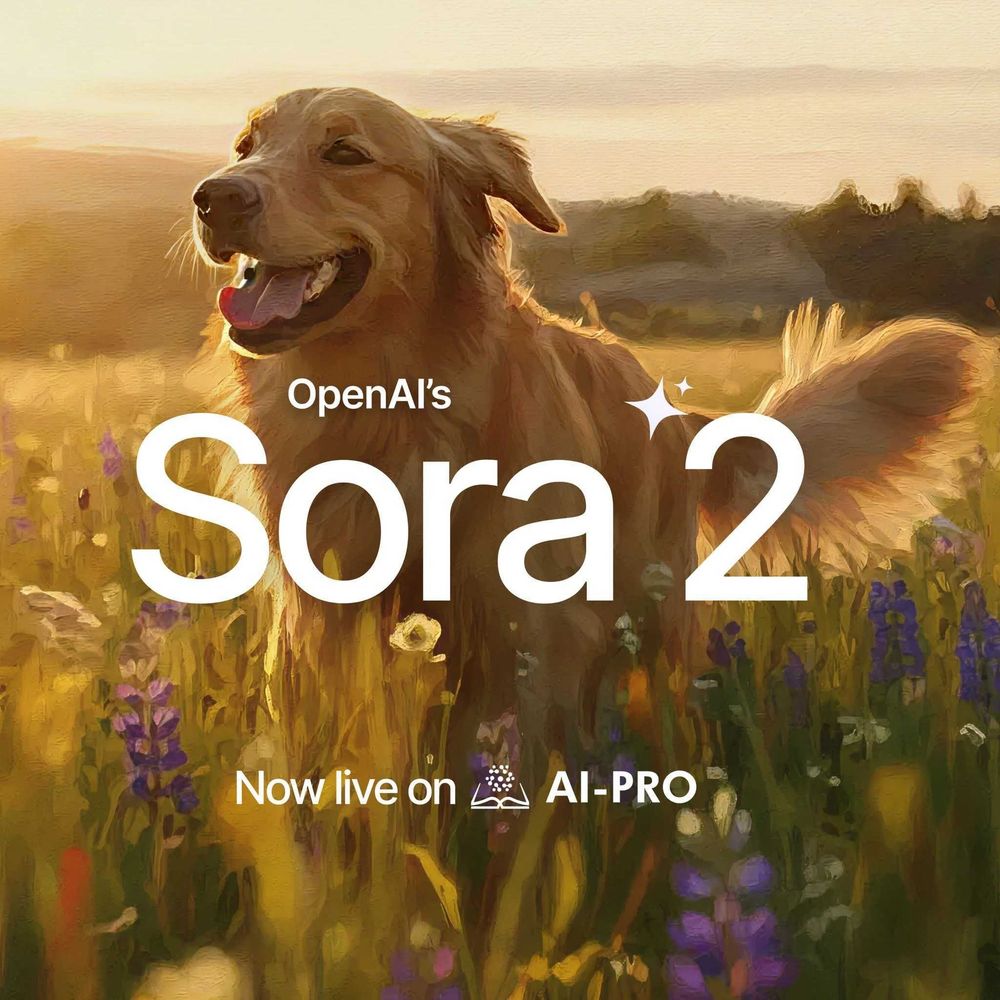OpenAI, the organization renowned for developing one of the best generative AI models in Chat-GPT, has released the latest iteration of their most famous creation - GPT-4o (o is for omni). This new model promises to push the boundaries of what artificial intelligence can achieve, building on the already impressive capabilities of its predecessor, GPT-4.

GPT-4 has already set a high standard with its advanced language understanding, context retention, and versatility in applications ranging from chatbots to content creation. But now, GPT-4o aims to surpass these benchmarks, offering enhanced accuracy, improved response times, and the ability to handle even more complex queries.
This article will provide a comprehensive comparison between GPT-4 and GPT-4o, delving into their features, performance, and usability. By the end, we’ll determine whether GPT-4o truly represents a significant advancement over GPT-4 and answer the question “Is GPT-4o better than 4?”
Overview of ChatGPT

OpenAI's journey into the world of generative AI began with the development of the Generative Pre-trained Transformer (GPT) models, a series of breakthroughs that have revolutionized natural language processing. The GPT models are designed to understand and generate human-like text based on the data they have been trained on, making them incredibly versatile tools for a wide range of applications.
The evolution of these models started with GPT-1, which laid the groundwork with its basic ability to generate coherent text. As research and development progressed, GPT-2 introduced a significant leap in performance, showcasing the potential for more complex and contextually accurate text generation. This trend continued with GPT-3, which became widely recognized for its impressive scale and capability, boasting 175 billion parameters and delivering remarkable performance across various tasks.
Following GPT-3, OpenAI released GPT-3.5, an intermediate update that further refined the capabilities introduced by GPT-3. GPT-3.5 offered improved language understanding and generation, addressing some of the limitations of its predecessor and paving the way for even more advanced applications.
GPT-4, the predecessor to GPT-4o, took these advancements to the next level. It introduced even more advanced language understanding, better context retention, and a versatility that made it suitable for an expansive range of applications, from creating conversational agents to aiding in content creation and beyond. Its ability to integrate seamlessly with various platforms and services underscored its utility in real-world scenarios, cementing its place as a cornerstone of modern AI applications.
Now, with the introduction of GPT-4o, OpenAI aims to build on this legacy. The "o" in GPT-4o stands for "omni," reflecting the model's ambition to provide comprehensive, omnipresent solutions across diverse tasks. GPT-4o promises enhanced accuracy, quicker response times, and a greater ability to handle complex queries, positioning itself as the next step forward in the evolution of AI language models. This latest iteration seeks to offer new functionalities and tools, continuing OpenAI's tradition of pushing the boundaries of what's possible in artificial intelligence.

4 Notable Features of GPT-4
GPT-4 stands as a remarkable milestone in the evolution of AI language models, showcasing several key features that distinguish it from its predecessors and competitors.
- Advanced Language Understanding and Generation
One of the standout features of GPT-4 is its advanced language understanding and generation capabilities. This model can comprehend and produce human-like text with remarkable accuracy, making it an invaluable tool for tasks that require nuanced language processing. The ability to generate coherent and contextually appropriate responses has set a new standard in natural language processing and enabled it to perform exceptionally well in a wide array of applications.
- Improved Context Retention
GPT-4 excels in retaining context over extended conversations or lengthy pieces of text. This improved context retention ensures that the responses it generates are more relevant and consistent with the preceding dialogue. It’s particularly beneficial in applications such as chatbots and virtual assistants, where maintaining a coherent and contextually aware conversation is crucial for a seamless user experience.
- Versatility in Applications
The versatility of GPT-4 is another notable feature. It’s been successfully deployed in a variety of applications, from chatbots and customer service tools to content creation and data analysis. Its ability to adapt to different contexts, provide valuable insights, and generate high-quality content has made it a popular choice across multiple industries. Whether it's writing articles, generating code, or assisting with research, GPT-4 has proven to be a reliable and versatile AI model.
- Integration with Various Platforms and Services
GPT-4's design allows for easy integration with a wide range of platforms and services. Businesses and developers can seamlessly incorporate it into their existing workflows and systems without much hassle. This is made possible by its API, which facilitates smooth integration and allows users to utilize it for enhancing their applications, websites, and tools. The model’s integration potential has expanded the reach and utility of GPT-4, making it accessible to a broader audience.
All in all, GPT-4's advanced language understanding, improved context retention, versatility in applications, and seamless integration capabilities have solidified its position as a leading AI language model. These features have not only enhanced its performance but also expanded its applicability, making GPT-4 a powerful tool for various tasks and industries.
4 Notable Features of GPT-4o

After going over GPT-4’s notable features, it’s kind of hard to imagine that something else could top such a powerful device. But GPT-4o builds on this solid foundation and aims to go beyond what is possible for generative AI systems. Let’s find out how it plans to surpass its predecessor by going over the key features of OpenAI’s latest iteration of GPT.
- Enhanced Accuracy and Precision
One of the most significant improvements in GPT-4o is its enhanced accuracy and precision. Through extensive training on a more diverse and comprehensive dataset, GPT-4o delivers responses that are not only more accurate but also more contextually relevant. This improvement reduces the likelihood of errors and increases the reliability of the generated text, making it more suitable for critical applications where precision is paramount.
- Improved Response Time
GPT-4o boasts significantly improved response times compared to its predecessors. This enhancement is particularly beneficial in real-time applications, such as customer service chatbots and interactive virtual assistants, where quick and efficient responses are crucial. The optimized processing algorithms and increased computational efficiency enable GPT-4o to deliver faster outputs without compromising on quality.
- Greater Ability to Handle Complex Queries
Another standout feature of GPT-4o is its greater ability to handle complex queries. Whether dealing with intricate technical questions, multi-step problems, or nuanced conversational prompts, GPT-4o demonstrates a superior capacity to understand and generate appropriate responses. This makes it an invaluable tool for applications that require deep comprehension and sophisticated problem-solving capabilities.
- New Functionalities and Tools Available with GPT-4o
GPT-4o introduces a range of new functionalities and tools that enhance its usability and expand its application potential. These include advanced APIs for seamless integration, enhanced customization options for tailored AI solutions, and new plugins that enable specific functionalities such as data analysis, code generation, and more. These tools make it easier for developers and businesses to leverage GPT-4o’s capabilities to meet their specific needs.
In summary, GPT-4o enhances the established strengths of GPT-4 with improved accuracy and precision, faster response times, a greater ability to handle complex queries, and a host of new functionalities and tools. These advancements position GPT-4o as a cutting-edge AI language model that continues to push the limits of artificial intelligence.
7 Points of Comparison Between GPT-4o and GPT-4

Now that we’ve learned about what these two AI models can do, it’s time to put them up against each other. We’ve chosen several metrics to compare GPT-4 and its successor, GPT-4o, so let’s take a look.
- Speed of Response: OpenAI's testing indicates that GPT-4o outperforms GPT-4 in benchmarks, including simple math, language comprehension, and vision understanding. GPT-4o is noted for faster response times, making it more suitable for applications requiring quick interaction and processing.
- Processing Power and Efficiency: While specific metrics on processing power aren't detailed, GPT-4o's improved performance suggests enhanced computational efficiency, allowing it to handle more complex queries and tasks efficiently.
- Contextual Understanding and Coherence: Users rate GPT-4o highly for its contextual understanding, although anecdotal feedback indicates variability in performance across different tasks such as coding and reasoning.
- Ease of Integration and Customization: Developers and users report switching between GPT-4 and GPT-4o based on task-specific requirements, highlighting the flexibility and ease of integration of both models into various workflows.
- Pricing Models: GPT-4o offers a cost-effective alternative with its improved computational efficiency. It is priced at $5 per million input tokens and $15 per million output tokens for developers using OpenAI's API, significantly lower than GPT-4, which costs $30 per million input tokens and $60 per million output tokens. Even GPT-4-Turbo, designed to be faster and cheaper than GPT-4, is more expensive than GPT-4o at $10 per million input tokens and $30 per million output tokens.
- Access for Web App Users: GPT-4o will power the free version of ChatGPT, replacing GPT-3.5, which grants free users access to multimodality, higher-quality text responses, voice chat, and custom GPTs for building personalized chatbots—a feature previously reserved for paying customers. Paid plans such as ChatGPT Plus, Team, and Enterprise (starting at $20 per month) will continue to offer access to GPT-4, with varying levels of message limits and features compared to free users.
- Enhanced Support for Non-English Languages: GPT-4o introduces improved tokenization for languages like Hindi, Chinese, and Korean, optimizing text compression and handling efficiency. This advancement aims to enhance the model's capability to process non-English prompts economically and effectively, addressing previous limitations in natural language processing for diverse linguistic communities.
Use Cases for GPT-4 and GPT-4o

Before we head into the conclusion of this article, let’s first have a look at how these powerful AI models are being utilized in different industries.
- Customer Support: These models excel in enhancing customer service interactions through more accurate responses and faster query resolutions. They enable chatbots to handle a wide range of customer inquiries efficiently, improving overall service delivery and customer satisfaction.
- Content Creation: GPT-4 and GPT-4o are powerful tools for generating high-quality content across diverse formats such as articles, marketing materials, and creative writing. They can assist content creators by generating ideas, drafting initial content, and even optimizing language for specific audiences.
- Education: In the educational sector, these models support tutoring platforms by providing personalized learning experiences and answering student queries in real-time. They cater to individual student needs more effectively and aid in language learning, educational content generation, and adaptive learning technologies.
- Healthcare: Both models contribute to healthcare applications by assisting in medical diagnostics, patient interaction through virtual assistants, and personalized healthcare recommendations. They help streamline administrative tasks, provide medical information, and support decision-making processes in healthcare settings.
- Finance: Within finance, they are used for analyzing market trends, conducting risk assessments, and automating customer service processes. They assist in financial forecasting, fraud detection, and customer interaction management to enhance operational efficiency and accuracy.
- Research: GPT-4 and GPT-4o facilitate research endeavors by aiding in data analysis, hypothesis generation, and academic research advancements. They assist researchers in processing large datasets, exploring complex research questions, and generating insights across various scientific disciplines.
- Entertainment: In the entertainment industry, these models power interactive storytelling, virtual companions, and gaming experiences. They create immersive narratives, generate dynamic content, and enhance user engagement in gaming and virtual reality applications.
The Verdict: GPT-4o or GPT-4?

So, is GPT-4o better than 4?
Overall, the comparison between GPT-4 and its successor, GPT-4o, reveals significant advancements and considerations that shape their suitability for diverse applications in AI-driven environments.
Both excel in enhancing language understanding, generating coherent responses, and integrating seamlessly into various workflows. However, GPT-4o distinguishes itself with improvements in speed, accuracy, cost-effectiveness, and enhanced support for non-English languages. These position GPT-4o as a compelling upgrade over GPT-4 for developers and businesses seeking advanced AI capabilities and even for individuals looking to utilize generative AI technology for their personal endeavors.
However, it’s best to keep in mind that while GPT-4o demonstrates clear advantages in several key metrics, its overall superiority depends on specific use cases and organizational needs. For tasks requiring rapid processing, enhanced accuracy, and efficient handling of diverse languages, GPT-4o offers substantial benefits. However, users may find GPT-4 more suitable for certain specialized applications or scenarios where legacy integrations are crucial.
To determine the best fit for your AI applications, we encourage experimentation with both GPT-4 and GPT-4o across different contexts. By testing these models in real-world scenarios and evaluating their performance against specific criteria, you can make informed decisions that align with your strategic objectives and operational requirements.
Ultimately, the ongoing evolution of AI models like GPT-4o underscores the dynamic nature of AI technology. As advancements continue, embracing innovation and exploring new possibilities with these models will drive progress and unlock transformative opportunities in AI-driven solutions.





